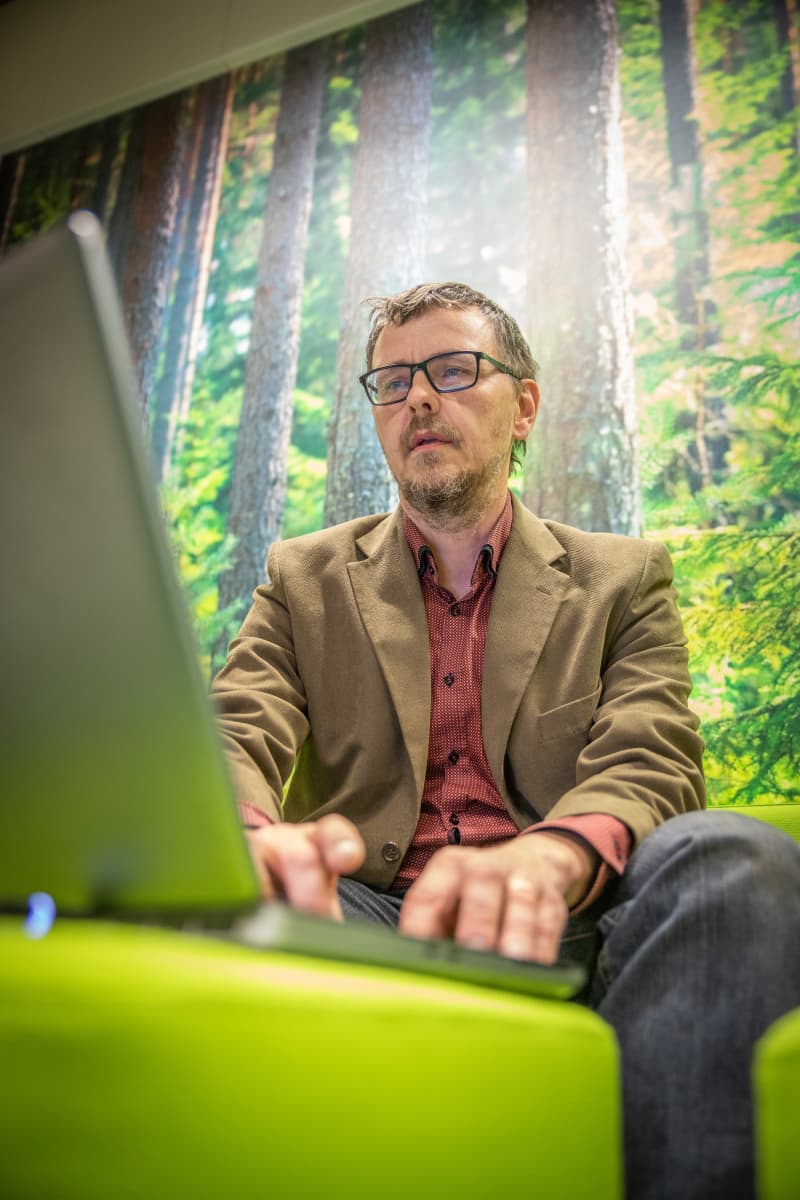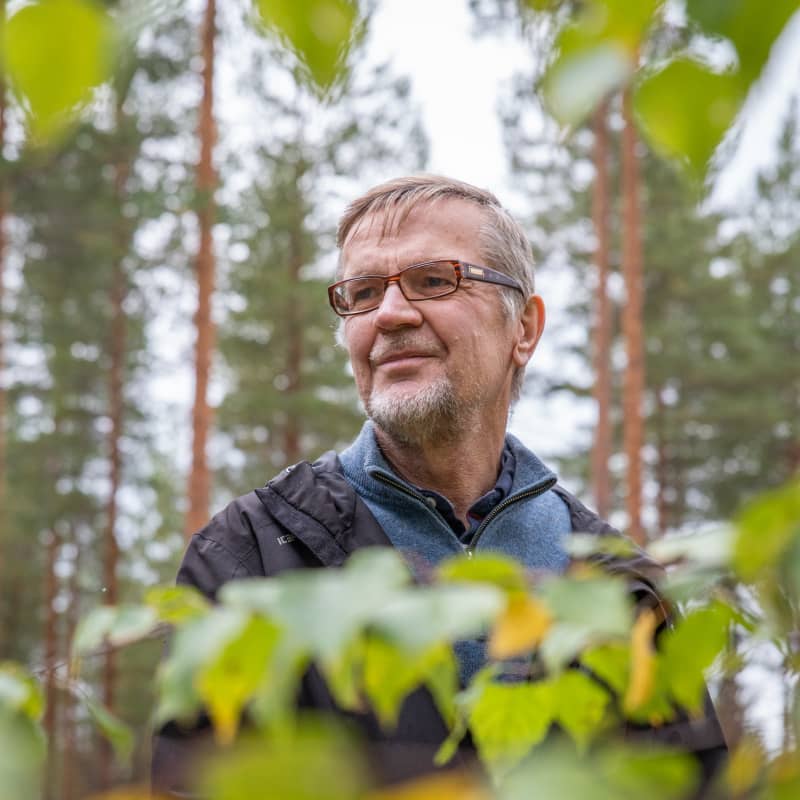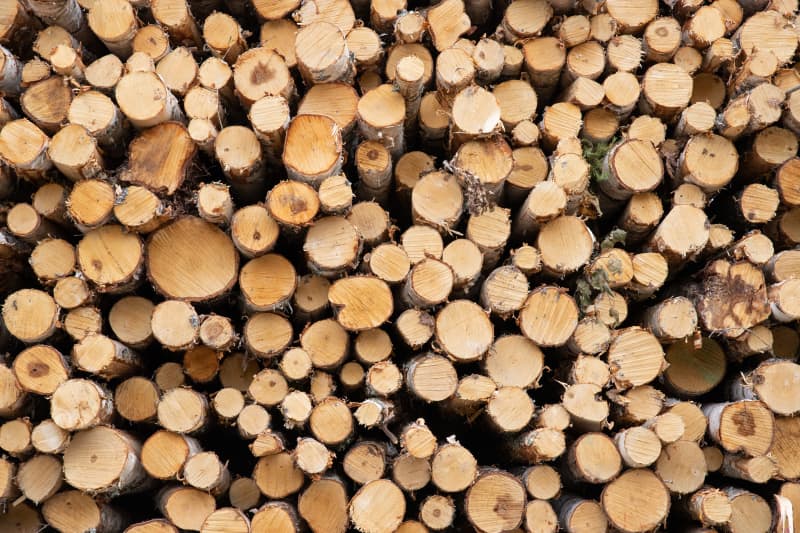At current logging levels, forest growth will decline even further, scientists say, and forests could become a source of emissions.
The growth of Finland’s forests will slow down for several decades, according to key researchers in the field.
According to scientists’ estimates, total forest growth will fall even further from the level calculated by the Natural Resources Institute Finland and will inevitably remain below that level at least until the end of the next decade.
The main reasons for the sharp decline in growth since the 1950s are the major changes in forest structure. Extensive clear-cutting and drainage of peatlands, among other things, have made it possible for a single forest generation to produce a lot of timber. The growth of what is by far the largest age class of forests has started to decline and is not being replaced.
The first information about the historical growth curve was obtained, information about how growth and logging rapidly increased Finland’s climate emissions.
Forecasting the growth of forests is key information in terms of forest use.
Growth of the largest age class of forests has weakened
Like the population, Finnish forests have large age groups. After the wars, Finland became prosperous with the help of forests. It also meant that forests were cleared and more productive forests were wanted by draining vast swamp areas to ensure growth there as well.
In southern and northern Finland, the largest forest age groups are of slightly different ages, but the general development has been similar throughout the country. Forests have become fairly uniform in age through clear-cutting over the decades.
For decades, tree growth continued, but according to researchers, the golden years of growth are now behind us and there is no quick return to the past. For example, there are already a lot of young trees, but still too few to replace the growth of the largest age group. In addition, more forest area is not obtained by draining, but on the contrary, the aim is to get rid of drains.
Professor Mehtätalo is an expert in mathematical methods and is currently calculating for Luke estimates on what level the growth of forests could be in the future based on forest resource data.
However, one thing is already certain: the natural laws of forests prevent the continuation of growth. Growth is determined by the trees on the blocks and their ages and growing conditions.
– When the growth of the forest has increased for 50 years, the growth starts to slow down. The growth is leveling off and it will be interesting to see how much it will decrease, Mehtätalo continues.
According to Luke’s data, the annual growth of forests is now a good 103 million cubic meters. Compared to the previous forest resource data, growth dropped by a few percent.

Mehtätalo doesn’t want to talk more about the unfinished calculations yet, but says nevertheless that the growth may well remain below 100 million cubic meters for a long time due to the age structure of the forests, possibly even closer to 90 million.
It could be about a 10 percent decrease in growth on top of Luke’s already announced estimate.
Government expects growth to continue
The change would be significant for the entire forest sector, more generally for the use of forests and Finland’s climate goals.
The figure can be compared to the current estimate of the national forest strategy for the year 2025. In the government’s strategy, growth is assumed to continue and be 110 million cubic meters.
The strategy is still being renewed under the current government, and according to the estimate made for the renewal, the total growth of forests would remain at around 110 million cubic meters for a long time to come.
According to the estimate, the growth will enable industrial logging like the current one until the next decade. The felling of trunk trees was about 76 million cubic meters last year. It is a record level in recent years.
However, felling will continue at a high level for at least next year, Pellervo Taloustutkimus estimates in PTT’s latest forest industry forecast. Luke’s assessment of the wood market is also similar.
Growth is not achieved quickly by avoiding felling or logging
The decline in forest growth comes at a difficult time in terms of climate goals. The EU has set Finland a binding target for land use, including forests, for the current decade. In light of last year’s figures, we are far from the goal.
However, the goal is not calculated based on one year. In addition to the amount of felling, the carbon sink lives according to the growth of forests.
According to forest resource data, the growth of the total volume of the forest and the difference between fellings clearly narrowed last year, but was still in the positive. However, cutting growth will inevitably reduce the gap and the future development of forest resources, if felling is not avoided and reduced from the current level at the same time.

However, according to Pukkala, reducing felling does not cancel the natural laws of the forest and the natural decrease in growth at hand. According to Pukkala, the biggest mistake would be to chop even more now: then the growth and the sink will weaken even more when the growth of the seedlings is the weakest.
– Whether we cut or not, there is no going back to the way it was before, Pukkala sums up the expectations of a quick return to the previous cutting levels and growth figures.
Pukkala’s advice in this situation is to be calm when cutting. At least by reducing final felling, growth will be restored and the carbon stock will increase at the same time.
From the point of view of the forest industry, the advice is unfortunate, as the supply of wood will decrease for a few dozen years. If replacement wood cannot be obtained from abroad, the industry’s export and tax revenues will decrease.
In general, according to Pukkala, forests should be felled less so that the growth does not weaken and remains more even. According to Pukkala’s estimate, the so-called total removal could be around 75 million cubic meters annually. The amount is significantly lower than Luke’s current estimate, where around 80 million could be cut for material and energy. In Luke’s chapter, firewood and dying trunk trees are not taken into account.
Forest habitat may even disappear
In its climate plans, the government has proposed measures to keep the carbon sink at the level required by the EU’s and Finland’s own goals. The long-term goal is to strengthen the throats.
The government’s plans are still based on data, according to which the growth of forests will not decline.
If growth weakens according to the researchers’ estimates, the sinks will collapse: a cut of even ten percent in growth means an annual reduction of approximately ten million tons in carbon dioxide calculations. According to last year’s data, the Finnish forest would also become a source of emissions.
More detailed information on emissions from felling Finnish forests can also weaken the sink more permanently.
Growth cut by early and intensified logging
According to the researchers, the decline in forest growth was to be expected when forests have been cut down with clear-cut logging and other more effective measures have been used. The change has now come to the fore more clearly and it is predicted to continue for quite a long time.
Finland is scheduled to be carbon neutral in 2035.
The Natural Resources Center is currently investigating the reasons for the drop in growth for the next government. Forest growth information is essential in terms of felling in the forest industry, other industrial use of the forest, climate policy, nature conservation and recreational use.
According to Mehtätalo and Pukkala, premature top felling and more forceful thinning also affect the coagulation of growth. According to Mehtätalo’s estimate, about a third of the trees are now removed from the forest during thinning, while previously it was even half less.
– Inevitably, when the final felling is brought forward and thinnings are intensified, the growth will decrease, he says.
Both researchers would also consider reducing the amount of thinning felling in order to restore growth. The directive would make a dent in the raw material flows of mills that need pulp.
Those in charge of forest resource inventories at the Norwegian Natural Resources Agency have estimated that the growth may also be due to changes in environmental factors, such as drought.
According to Mehtätalo, these can also affect the refraction of quickly visible growth. However, the main reason for earlier growth and its decline is the change in age groups.
Growth boost difficult to get elsewhere
As part of the current government’s bioeconomy goals, the growth of forests is being accelerated, especially by increasing fertilization. The production of nitrogen fertilizer requires at least natural gas, which is in short supply or is expensive.

Growth is also sought from, for example, faster-growing tree seedlings.
According to the researchers, measures that increase growth are not enough, even at normal prices, to compensate for the change caused by the reduction in growth.
The growth of forests has also been increased by climate change, both through higher average temperatures and increased carbon dioxide concentration in the air. The impact on growth caused by climate change continues, but according to the researchers, even that is not enough to cover the losses in growth.
Winter and storm damage caused by climate change can already be behind the decline in growth. Warming also increases the drying out of forests and the risk of pests.
However, Professor Mehtätalo reminds us that without felling, the carbon sequestration capacity of forests will weaken over the decades. In the end, it’s all about the amount of felling, the felling methods and what is made of the trees.

